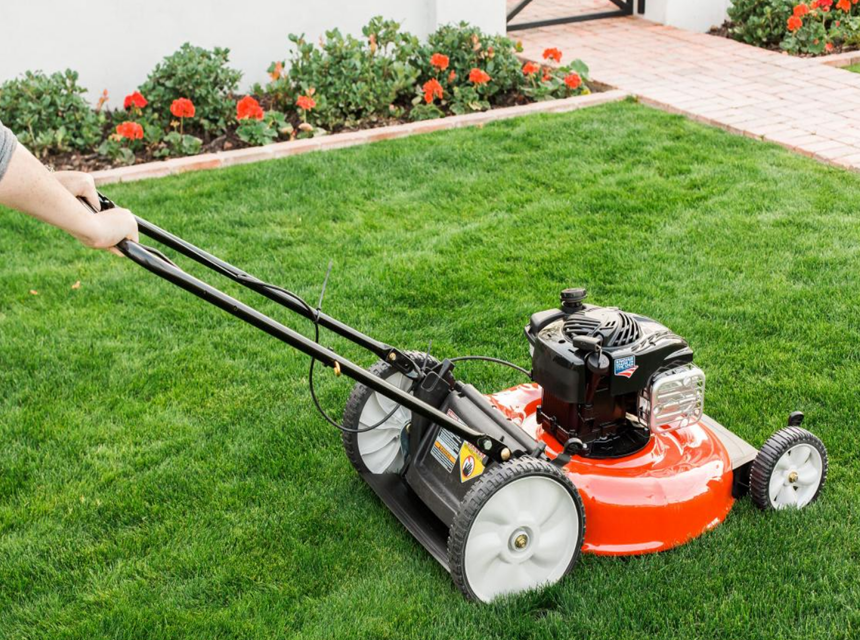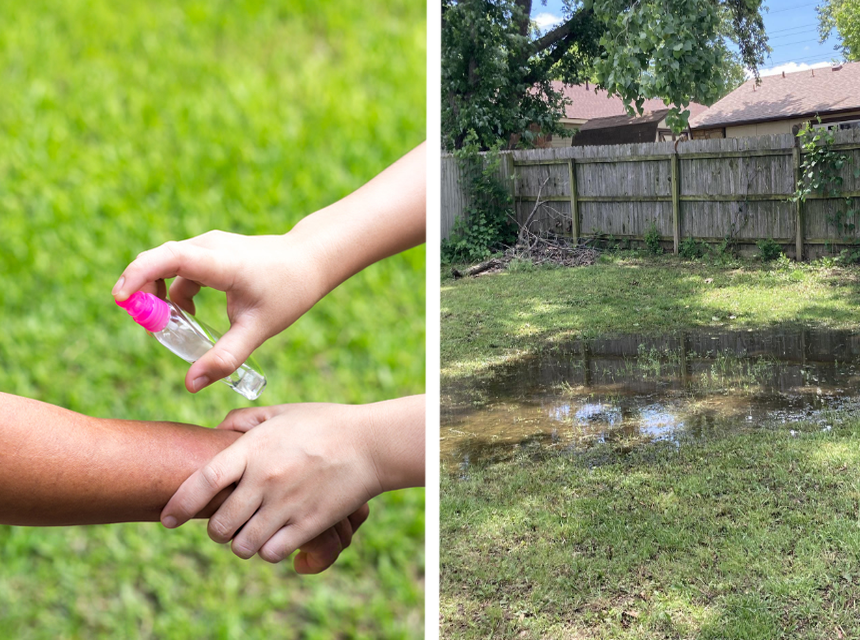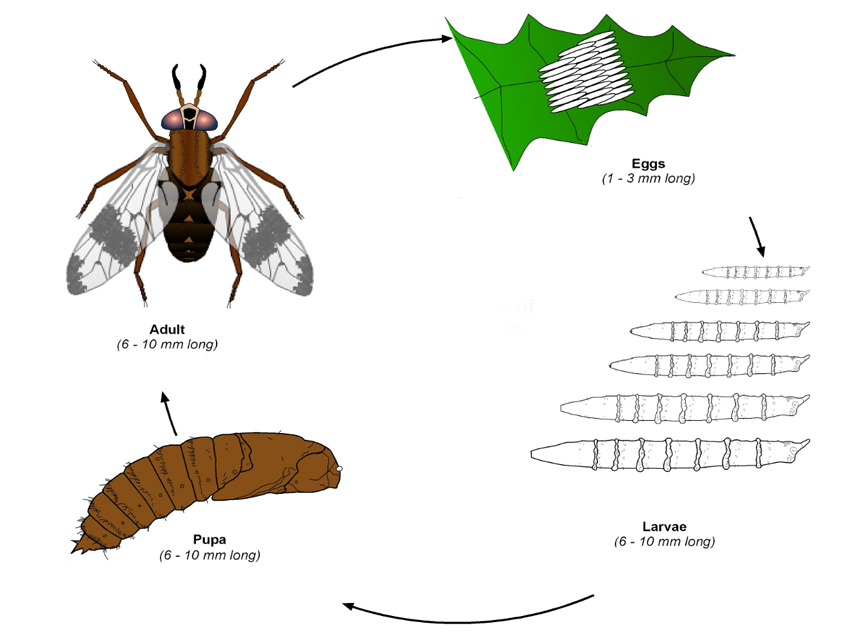

Flies aren’t anyone’s favorite thing to find buzzing around the property! They’re unpleasant to look at, unhygienic, and they breed fast enough to give anyone a headache! It can give you a real headache trying to figure out how to get rid of unwanted pests. Some of the least pleasant are the blood-sucking deer flies, a particularly unappealing type of horse fly.
In this article, we’ll look at how to look for, identify, treat, and prevent your home from pesky invaders. Read on to find the best options on how to get rid of deer flies for good!
Horse flies and deer flies, both members of the Tabanidae family of insects, have one dubious convenience to their existence — they’re pretty hard to miss! These flies are very big, compared to other flies, with some examples reaching over an inch in size. There are quite a number of sub-species within the family, but they all share common traits.
Both horse flies (Tabanus, Hybomitra) and deer flies (Chrysops) rely on blood-sucking to produce eggs, which is why knowing how to get rid of deer flies is important not only for aesthetic reasons but also for health. They can also cause allergic reactions in many.
Deer flies are smaller than other horse flies but still large. Close inspection will show you bright-colored eyes and dark-banded large wings that are otherwise translucent. However, the method on how to get rid of horseflies and deer flies is different.
– Large size, yellow or green coloring around eyes and on the body, black-and-clear banded wings of adult flies. Adults also have large, segmented antennae, and females have scissor-like jaws.
– Cylindrical eggs around leaves or other hidden areas surrounded by moisture. These eggs are white and darken over time to black. They’re laid in batches of up to 800 at once!
– Tan, white, or brown worm-like larvae with tapered ends reaching about an inch in length.
Since their size makes them quite easy to find and identify, inspecting for these pests is a relatively simple first step in how to get rid of deer flies in your yard or your home. The important thing is knowing where to look based on the preferences of the creatures. These creatures are found worldwide except in three places: Iceland, Greenland, and Hawaii. Within the US, Florida is a particularly fertile breeding ground due to the hot moist climate of the state, but they are also common in every other mainland state.
Deer flies (and other horse flies) prefer moist areas and will also congregate in droves around anywhere that naturally gets very warm during the day.
It’s important to know how to get rid of deer flies around swimming pool areas, in wet and hot parts of buildings, including bathrooms and kitchens, within greenhouses, and around streams, tanks, and other sources of moisture and warmth. Females always lay eggs in the soil or vegetation around ponds and swampy areas (natural or not). You may also find deer flies in your house, so it’s important to know how to get rid of deer flies in your house in addition to how to get rid of deer flies outside.
Deer fly season — aka the time when the deer flies are around the most and are the biggest problem for people and animals — runs between May and October, with general peaks in June and July, though this varies very slightly by location. Unlike many other insects, be aware that deer flies prefer to feed during the day.
Contacting a professional is always the most direct way to be rid of a fly problem, but it’s rarely the most cost-effective. There are several steps you can perform yourself more economically to get rid of deer flies by yourself!

Deer fly eggs are laid on vegetation like tall grass, and adults also like to rest there when they are not actively feeding from a host. Once grass reaches around three inches, mowing it down is a great way to cut off the spread of deer flies and their eggs.
Left standing too long, garbage, pet waste, and standing water attract all flies (including deer flies) thanks to the decay. It’s very important to cut this source of attraction away to help rid yourself of fly infestations for good.
The smoke generated by burning candles and torches can help to keep biting insects from bothering you, especially in outdoor areas. Citronella candles are an option, but the smoke from any burning torch will help.
If you find yourself outdoors without any source of smoke, you can try making a smudge fire. To do this, light a small fire and then blow it out so that only the embers are burning. Place a green leaf or piece of bark on top of the embers and blow gently to create a stream of smoke. You can then waft the smoke around your body to help keep insects at bay.
A bug zapper UV light draws insects toward it and then traps and kills them by electrocuting them once they touch the device. Bugs can’t resist the attraction. Bear in mind, though, that these can only help fight off bugs; they’re not a one-and-done solution! Finding the best bug zapper options available is crucial to getting rid of them.
Insecticides, including sprays and fly balls, are a good way to plan an all-out attack on fly infestations on your property. Deer-fly-specific options such as the Deer Fly Ball Deluxe kit are best if you’re sure of the kind of pest problem you have. Remember, you can always ask in your local hardware store for advice if you’re not sure. As well, repellants such as Ultrathon Insect Repellent Lotion are a good way to keep you from being bitten while you deal with the problem.

As well as keeping garbage and decay clear and grass mowed, the following steps will help prevent deer flies from becoming a pest in your home and yard:
– Be vigilant about standing water.
– Seal any leaks in plumbing quickly.
– Be proactive in treating potential problem areas as the season approaches.
– Keep an eye on potential breeding areas.
Some steps to avoid bites in general during deer fly season include:
– Avoiding dark colors – These flies are attracted to dark moving objects, so wear bright clothing instead.
– Wear repellant and research the best fly repellants on the market.
– Avoid wetlands, especially those that are overgrown.
– Always wear a hat in the summer!
There are many different types of flies, and while it might seem like it isn’t important to know the difference, the best prevention tool is knowledge! We’ve created a handy table below to help you identify some of the most common household flying pests and distinguish between them.
Type |
Appearance |
Habitat and behavior |
Treatment and prevention |
Whiteflies |
|
|
|
Cluster flies (Attic flies) |
|
|
|
Mayflies |
|
|
|
Yes. Deer flies and horse flies, like all members of their insect family, are biting blood-sucking insects. Only the females bite, as blood is required for them to be able to generate the eggs that produce the next generation.
Deer fly bites are common and usually not a reason to panic. However, deer flies do spread certain diseases and bacteria, so vigilance is important. The first step after any bite is to thoroughly clean the bitten area using soap and water, preferably an antiseptic soap. To reduce pain and itching, apply ice to the affected area. Allergy medication can help prevent further itching and prevent you from scratching and causing further issues.
If you develop any symptoms like a wider rash or illness, it’s very important to contact a medical professional. Inform them of the bite and seek treatment.
The most problematic disease carried by deer flies through their bites, particularly in the western United States, is tularemia. This disease is also spread by ticks and other biting insects. The bacteria affects both humans and animals. Symptoms usually involve swollen lymph glands and occasionally ulcers as well as other signs of bacterial infection. Always contact a medical professional.

A deer fly lives for around an average of a year from egg to natural death. Females lay up to eight hundred eggs which hatch into larvae. These larvae grow and molt through several stages (instars) while they feed on small organisms and decaying matter on the ground. After about ten stages of their larval form, the deer flies move to dryer areas, where they become pupae (a little like cocoons) for a few weeks. When they emerge as fully formed adults, they seek out other adults to breed and begin the cycle again.
With all fly infestations, chemicals should be used as a last resort, partly due to toxicity for humans, pets, and wildlife. Those with small children and animals in the home should avoid chemical treatments. As well, the quick generational breeding rate of flies means that they build herd immunity very quickly and therefore become resistant to pesticides fast. For this reason, chemical treatments should be the last option considered.
Deer flies, horse flies, and other flying pests might seem intimidating or even unbeatable, but treatment and prevention are more than possible. The first step to overcoming the infestation is being able to identify exactly what is going on and, from there, finding the best treatment to suit yourself, your home, and your personal situation. Remember, while there are several DIY options, you should consult a professional if there is any doubt, especially if using chemical treatments to prevent or attack fly infestations.
Flies aren’t fun, but they are manageable. And remember: prevention and identification are the best forms of treatment! Since you know how to get rid of deer flies, it would be no issue to get rid of mayflies, cluster flies, and white flies either.